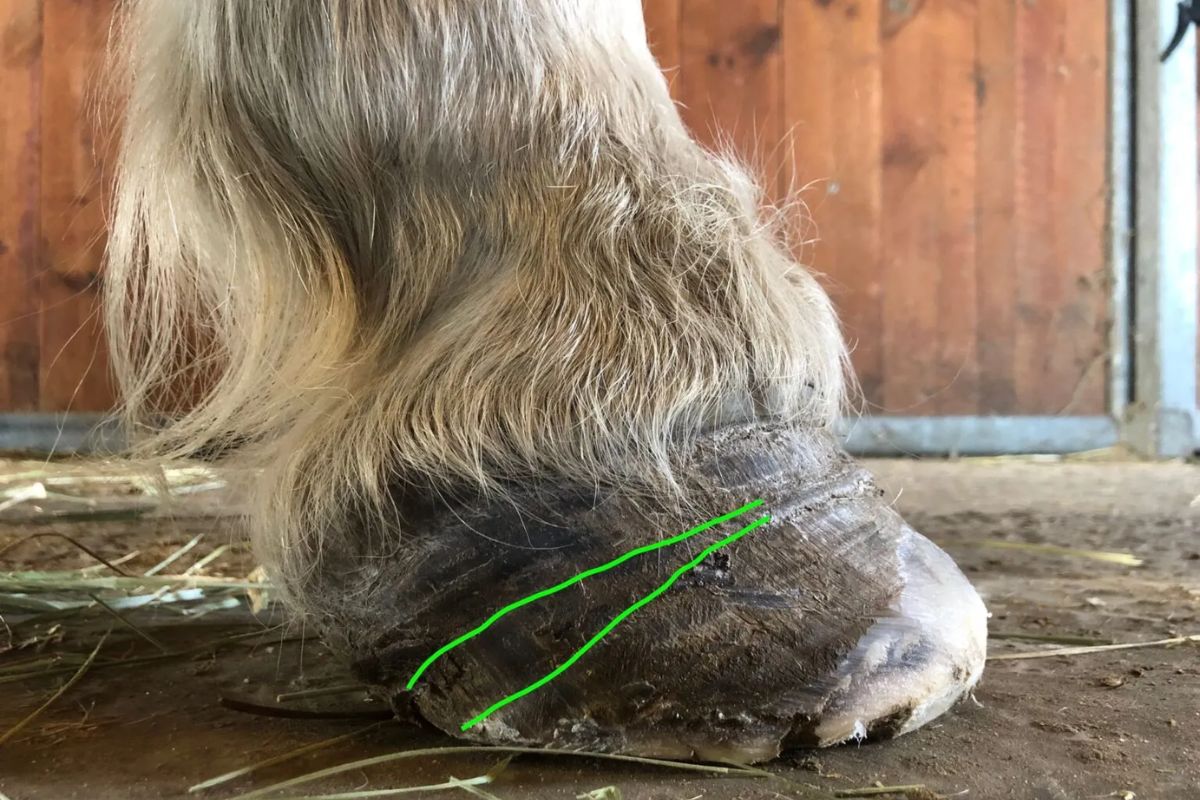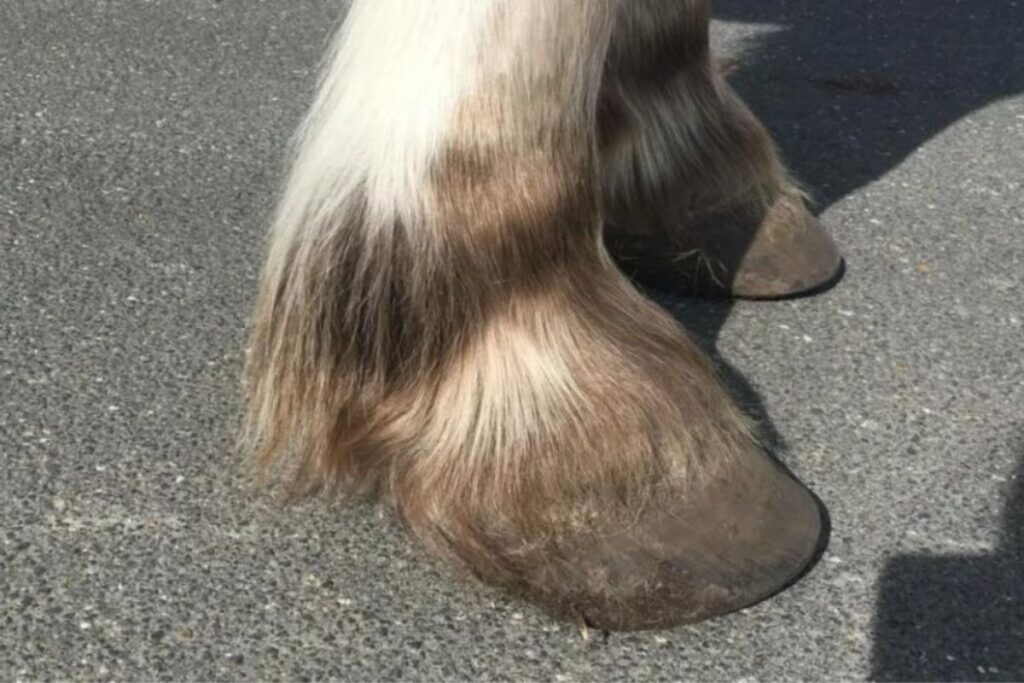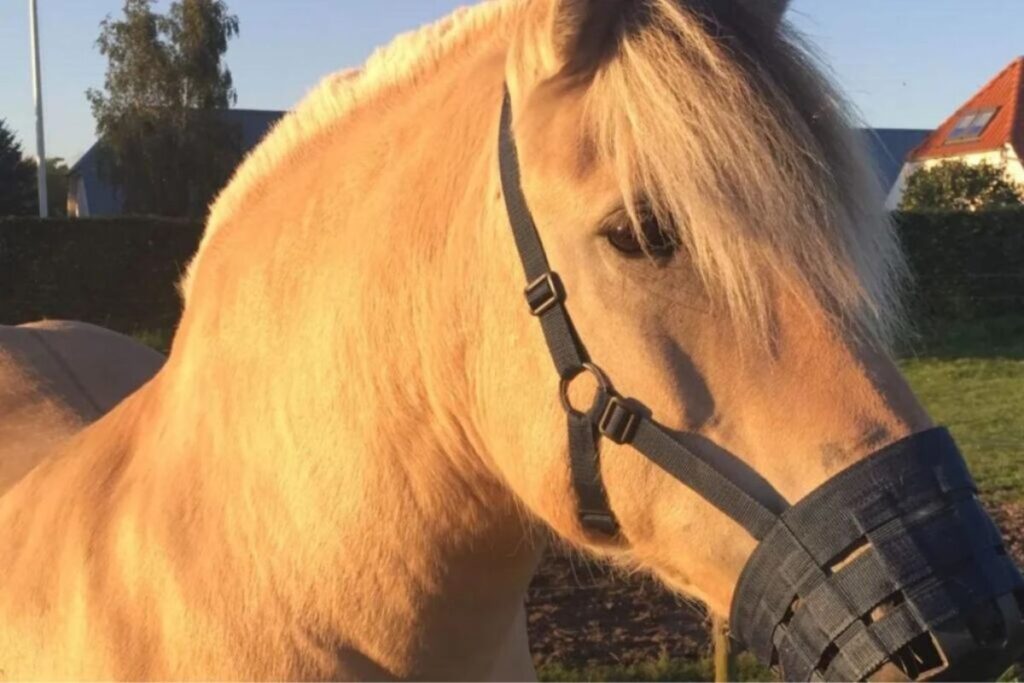Menu

For many horse owners, spring and summer equals laminitis, but in reality, a horse can suffer from laminitis year-round – and it's not always down to the grass. It's not necessarily only the obese horse that can get laminitis, but being overweight can increase the risk.
We have here tried to provide a general overview of laminitis, but there are many more aspects of laminitis than just the following.
There are different categories of laminitis, and the causes are widely different. Therefore, one cannot conclude that it is only the obese horse that can get laminitis.
Basically, laminitis is a disease that affects the horse's hoof and coffin bone by causing inflammation in the hoof's laminae. The laminae ensure that the hoof capsule and dermis are attached and that the coffin bone is secured in the hoof capsule (see illustrations here of the hoof structure). If inflammation occurs in the laminae, there is a risk that the coffin bone will detach from the hoof capsule. Thus, the coffin bone can rotate away from the hoof capsule and out through the hoof. This is extremely painful for the horse, but this can be corrected with the right treatment.
If the coffin bone penetrates the sole, it is still possible to help the horse. As with laminitis in general, the cause must be removed, then the hoof should be trimmed and relieved so that the coffin bone is not in contact with the ground. Rest may be necessary for a short period, but otherwise, the horse should move to get the blood circulation and lymph system functioning again. This is, of course, when the acute phase is over, and it should always happen in cooperation with the farrier and vet.
In less severe cases, it is possible to avoid the rotation or sinking of the coffin bone. The future prospects also depend to a great extent on when you take action and how significant the damage is to the hoof.
There can be different reasons why the inflammation occurs. Up to 90% of laminitis cases are due to the horse having some form of metabolic disease such as PPID/Cushing's or EMS. Here the horse is not able to regulate sugar and thus blood sugar from grass, forage, and concentrated feed. That's why laminitis is most commonly seen in the spring and summer when the sugar content in the grass is high.

Also check out (sponsored content): Many cases of laminitis: How to deal with and prevent it
It is therefore essential that you – if not already a few months ago – have understood what you can do to avoid your horse getting laminitis as a result of spring and summer grass, for instance.
In short, it can be anything from sudden feed changes and infections to genetics or metabolic disorders that can trigger laminitis.
Source: Susan Helany, feed consultant at Nordic Horse
There are also other types of laminitis, where different things trigger it, but the process in the hoof – and the pain for the horse – is the same. The symptoms often resemble each other, and the treatment will often be alike. There are several considerations you should take if the laminitis has occurred as a result of too high an intake of sugar and/or a metabolic disorder
Also check out: Scientists: Global warming increases the amount of laminitis in horses
• Inflammatory laminitis
• Metabolic laminitis
• Mechanical laminitis
This is probably the type of laminitis that most horse owners are familiar with. It is often seen during spring and summer if the horse has ingested too much sugar and/or starch through, for example, grain or sugar-rich grass. Both create a fermentation error.
This type of laminitis occurs when the horse ingests too many endotoxins (toxins) into the body, as it damages the lamellae in the hoof. The high amount of toxins can result in a fermentation error in the horse's gut system.
If a mare has foaled, and the afterbirth is not removed, there is a risk of a uterine infection (metritis). This can cause the mare to develop laminitis, but this rarely happens.
Moreover, inflammatory laminitis can also occur if the horse ingests too much sugar through the grass without a gradual acclimatisation. This will also cause a fermentation error in the horse's gut because it ingests too many toxins, which will gradually break down the lamellae in the hoof.
When we have sun and cold, we have sugar production, but we do not have much grass growth, and so the sugar accumulates. Sugar comes when the sun shines, and therefore we can also see laminitis in autumn, for example. It's all about when the sun shines, we have sugar production, so if it's warm, the sugar is used for the grass to grow. If it's cold, the sugar accumulates in the grass until it's warm enough for growth to occur.
This is also why there can be large fluctuations in the amount of sugar in the grass. Over the summer, the sugar content is often low at night and early in the day - but this is only a rule of thumb.

Also check out: Spring grass and sugar
Metabolic laminitis often affects horses that have PPID, EMS, or are overweight. Simply put, these are horses that are extremely sensitive to insulin. They have a poor starting point when consuming even small amounts of sugar and starch, as they are not capable of regulating their own insulin production.
The cells do not respond to insulin, and thus the horse does not absorb the sugar into the tissue. Instead, the sugar is stored in the fat deposits around the withers and tail root. Therefore, you often see the characteristic fat deposits in laminitic horses. The horse cannot regulate its own insulin production, which leads to major fluctuations in blood sugar and the horse's ability to regulate hunger - and the high production of insulin therefore destroys the laminae in the horse's hooves.
If the horse already has noticeable fat deposits or slight overweight during winter and early spring, it might be worth considering whether the horse should graze at all. There is also evidence to suggest that training can help the horse's hormonal balance. In the end, it is the interplay between feeding and exercise that can best help the metabolically laminitic horse.
Often it is genetics that come into play, as thrifty horse and pony breeds are more prone to having metabolic issues, but laminitis is a complex disease that continues to be researched.
If a horse has been injured on one leg and thus relieves the other, it can cause laminitis in the healthy leg. This leads to overloading - and particularly overloading of the hoof and its laminae, because the hoof simply suffers from the prolonged condition with poor blood supply in the opposite leg. Fortunately, this type of laminitis is extremely rare. The same applies to medical laminitis, where the horse, for example, cannot tolerate corticosteroids.
Source: Susan Helany, feed consultant at Nordic Horse
Once your horse has a prickly gait - coupled with the other symptoms of laminitis - you need to act quickly, regardless of the type of laminitis.
• Remove the horse from the cause - such as the grass - until you know if the horse is laminitic.
• Call the vet and blacksmith immediately, who can provide pain relief for the acute phase. Together they can often help make the best plan for your horse and follow it closely.
• Put the horse in a box with a soft bottom like sand, so the horse can relieve the legs as much as possible. Give it peace for a period, which you agree with the vet.
• Cool the legs with cold water or similar.
• Have a feeding plan made by a feed consultant, so both roughage and concentrate feed are adapted to the horse's condition. Here, there may need to be a slowfeeder net or other slowfeeder solution as well as the right composition in the concentrate feed, so the horse is helped as much as possible in both the short and long term.
Source: Susan Helany, feed consultant at Nordic Horse
It is important to stress that laminitis does not necessarily have to be a death sentence. Certainly not if you, as a horse owner, are willing to make some allowances and focus on rehabilitation. However, you must remain vigilant for the rest of your horse's life if it has ever been laminitic.
Even though damage has already occurred when the horse has had laminitis - for one reason or another - you must ensure your horse gets the necessary nutrients through feeding, and that the cause of laminitis is eliminated or minimised. After this follows a life where you, as a horse owner, need to be in regular dialogue with a vet and blacksmith or trimmer, as well as feed consultants.
A subclinical laminitic horse is generally experienced as being tender-footed. You typically see event rings in the hoof capsule, where the distance between the rings is narrower at the front of the hoof and wider at the back towards the heel. The sole may seem flat and lack concavity. The horse may also be more reluctant to move forward and resist walking on hard and/or rocky ground. It may also have difficulty turning in a small circle.